Songkhla - What to do, what to eat and what to see in this historic art filled town in southern Thailand!
Disclosure: This article contains affiliate links. We will earn a small commission from any purchases made through these links.
Located northeast of Southern Thailand’s largest city of Hat Yai, the historic town of Songkhla sits between the Gulf of Thailand and the large Songkhla lagoon. With its historic significance, pretty old town and funky street art, Songkhla has become a popular destination for Thai tourists. We had found out about Songkhla from one of our favourite YouTubers, Paddy Doyle and as we had just crossed the border from Malaysia it seemed the perfect first stop on our Southern Thai adventure.
Contents:
How to get to Songkhla?
Where to stay in Songkhla?
What to do in Songkhla?
What to eat in Songkhla?
How to get to Songkhla?
By bus
As you may have read in our previous article we got a local bus from Hat Yai central bus station to Songkhla which cost us 34 baht each (£0.80 or $0.98). Hat Yai’s bus station was full of super helpful people but even if it hadn’t been, it was very easy to navigate with each bay being labelled in English as to where the minivans went. From what we could see there were links to the majority of the south of Thailand and further afield to Bangkok and other larger cities.
By Songthaew
It is also possible to take a local Songthaew to Songkhla. Just flag down one of the ubiquitous flatbed taxis and check it is going in the right direction. Just ask the driver to drop you off in the centre of Songkhla.
If you’re heading back to Hat Yai from Songkhla there are plenty of Songthaew’s waiting nearby the Lee Subsin market area.
By Grab (taxi or ride-hailing app)
Another more pricey option is to book a taxi or use Grab which will set you back around 250 to 300 baht depending on the pick up/drop off points. When we left Songkhla it was bucketing with rain, and as we didn’t fancy a soggy shuffle we treated ourselves to a Grab to take us back to Hat Yai. If you do decide to use Grab there may be a bit of a wait for a driver. Once in Hat Yai (as it is the biggest city in southern Thailand) there are transport links (bus and trains) to Bangkok and further afield to Malaysia and Singapore.
By air
The nearest airport to Songkhla is Hat Yai international airport which has internal flights within Thailand as well as international flights. From the airport you will need to get a bus or taxi to get you to Songkhla itself.
Booking tickets in advance
To book your tickets to Songkhla (or anywhere in South East Asia really), you can use 12Go. We have booked tickets through them loads as they serve so many useful routes. Book your tickets here!
Where to stay in Songkhla?
After doing some research we decided to stay in the heart of the Old Town itself. There was a plethora of good cheap restaurants and a few nice looking bars in the area, as well as being within walking distance of all the main attractions on offer.
Yu Cafe Hostel - Map Link
We stayed at Yu Cafe Hostel and opted for a private room with a shared bathroom.
Our private room had an odd but useful setup. A single bed was set 6 feet under a large double bed. We used the single bed as a sofa and slept above. The room set us back 542.56 baht (£12.73 or $15.62) a night. You can book your stay here.
The hostel was great. Seemingly run by teenagers and set in a beautiful, historic shophouse, there was a nice social area (although very quiet when we visited), a large work space and a fantastic kitchen. The facilities were really good with plenty of showers, toilets and even a rooftop garden. There were also two very cute and very fluffy hostel cats, which is always a bonus! There was a cafe on site, but it was not open while we were there. We’re not sure but we think the cafe might have migrated down the road and become Lyn’s Shanghai cafe.
Other accommodation in Songkhla
There is plenty of accommodation in the Old Town and surrounding Songkhla. Including some much luxurious offerings for those not looking for a hostel! To book your stay or check out your options, have a look at the map below:
What to do in Songkhla?
Songkhla Old Town
North of the university but south of the museum sits the Old Town gate. This gate and a small section of wall near to the museum are all that remain of the old fortifications of the town. Nowadays the gate marks the entrance to the historic Old Town of Songkhla. Through the gate, the old town spreads out across three parallel roads, its eastern side bleeding into the modern town with its west bordering the lagoon.
The shop houses of the old town are in varying states of decay and restoration and are an interesting mix of Thai and Chinese architectural styles. Temples and shrines hide amongst the streets and alleyways and just wandering around the town guarantees you to find something unexpected and beautiful.
Speaking of the unexpected and beautiful. Songklah Old Town boasts some fantastic street art. Some of the art is hidden away down the small streets, and some is plastered large across the face of buildings along the main roads. The street art is of a similar style to that of George Town and Ipoh of Malaysia, where street scenes are painted on walls where they can almost fool the eye into mistaking them as real. In one mural, a man reclines in a chair whilst his soup cools on a table under a window. The window is real, but the man, soup and chair are all painted. These illusionary art pieces are joined by more abstract works including a beautiful black and white one with flowing lines and shapes that bears the message of “no plastic bags”. We are not arty enough to see the link between the work and its message, but it was definitely pretty!
There is so much to see and even though we had quite a few thorough wanders around the old town, we are sure there are still loads of things we missed; it wasn't until our final day when we looked up and spotted an enormous pair of sculpted eyes set into the top floor windows of a house, staring down on us!
To fuel our street art hunt, we required caffeine and luckily the old town of Songkhla has coffee shops in abundance. With a mixture of traditional old school coffee shops, and modern independent artisans cafes there’s a choice of coffee whatever your mood. We very much enjoyed two lattes from the Bike Camps Caff’e in the heart of the old town.
At the northern end of Nakkhon Nok Road, lies the 100 year old Hub Ho Hin Rice Mill. Painted bright red and with an old brick chimney, the red rice mill has come to emblemise Songkhla old town. Inside the mill is a heritage centre where you can read up on a little of Songkhla’s history as well as walking out onto the dock of an active fishing harbour. When we visited we were treated to a spirited karaoke and dance performance by a group of local old ladies. We’re pretty sure this wasn’t part of any exhibition, but rather we’d just wandered into their Friday afternoon dance club.
Songkhla National Museum - Map Link
A short walk north of the old town is the Songkhla National Museum. As we had just rocked into town without knowing the slightest thing about the history of Songkhla we thought we owed it a visit. Set in a beautiful white building, the museum is surrounded on two sides by a well tended garden and a lily pond. Crossing the arched bridge we entered into a large courtyard. Purchasing two tickets costing a total of 300 baht (£7.05 or $8.65 - foreigner price) we started exploring the museum. The museum was really informative without being overwhelming and gave a good history of the town and all the many ancient archaeological sites in the surrounding province. We learnt about the birth of the coffee industry here as well the influences of Malay and Chinese culture and also Songkhla’s role in the European Age of Exploration. The museum is just big enough to feel like an education without ever becoming dull. The exhibits are written in both Thai and English. We spent about an hour in the museum and thoroughly enjoyed ourselves.
Immediately to the south of the museum on Chana Road lies the only remaining section of the old city wall. The majority of the wall has now been demolished to make way for necessary roads and other infrastructure but this remaining structure gives a glimpse as to how impressive the wall would have been in its prime.
The beaches of Songkhla - Samila and Chatalat Beach
Right at the top of the town and all along the east of Songkhla are the two beaches of Samila and Chatalat. Samila beach seems to be the more popular one, with its famous statues, horse riding and rows of beachfront restaurants. We walked here from the old town during the day and it took around half an hour. The walk was pleasant, but isn’t a must do in terms of sightseeing. The route takes you from the old town, past the bustling market, alongside the national museum and around the base of Tangkuan Hill, before reaching the beachfront. The northernmost tip of the beach seems to be less cared for than the rest, but as we made our way down past some very nice looking seafood restaurants, the white sands became cleaner and cleaner and the Instagram swings started to make more sense.
There are a few market stalls set up which sell the traditional beachfront ice-creams, toys and obligatory elephant pants. When we visited it was an overcast day with a sky threatening a storm so there were very few swimmers, but lots of people out enjoying the beach.
Also on the beachfront (Samila beach) are two famous statues.
The more famous statue is of a golden mermaid sitting on top of rocks along the shore. Legend has it that the mermaid came up from the sea one day to brush her hair when she was spotted by a fisherman. The fisherman was instantly smitten by her beauty but when he approached her, he startled her and she fled into the sea. The fisherman returned everyday to look for her but she was never seen again.
Moral of the story is don't be a sneaky creepy guy!
The other and less famous statue is much larger. A towering cat sits staring at a mouse balanced on his tail, the mouse holding an orb in its mouth. Again a helpful plaque gave us the story behind this statue. There’s a local fable about a dog, a cat and a mouse who wished to escape a ship and return back to dry land and to their home of Songkhla.
See the video below for our extremely bad re-telling of the full fable. Welcome to Songkhla story time!
If you follow Samila beach south (back towards town) it will become Chatalat beach. Chatalat beach is lined on the shoreside with lots of large late night bars and studded with the occasional coffee shop and restaurant. The weather was closing in so we didn’t spend much time on Chatalat beach, but the bars looked like they would be great fun after dark! These bars are located close to the Tinsulanonda Stadium so would make a great pre/post game hang out!
Tangkuan Hill viewpoint
Located north of Songkhla Old Town, and visible from all around the town is Tangkuan Hill. The hill is topped by a Royal Pavilion as well as a royally appointed Buddhist stupa. The top of Tangkuan Hill is a popular viewpoint as it gives panoramic views over Songkhla town, the lagoon, the beaches and out to the Gulf of Thailand.
There are two ways to climb this hill. The active and the lazy way. We opted for the worst of both worlds. By climbing up the hill and then taking the lift back down. The route to the top of the hill starts on its west hand side. The staircase to the top is guarded and bordered by two large Naga statues. As you climb higher, you pass ornamental ponds and go through the Khao Tang Kuan Royal Pavilion. Catching our breath we couldn’t help but remark that it reminded us of St Pancras station or maybe London’s Victoria and Albert museum. A helpful plague let us know that we weren’t going mad, and that the King had instructed the pavilion to be built in a European style. The views from the pavilion were fantastic and gave a small glimpse into what awaited us at the top.
One final Naga lined staircase and we had reached the top. The crown of the hill is marked by a Buddhist temple, with a large white stupa and several statues. Viewing platforms on each end of the hilltop temple look out over the town of Songkhla and its coastline. It’s not a long or hard climb to the top, but even on an overcast day the view over Songkhla is well worth it. If you do decide to take the lift both up and down, we would recommend taking the short walk down the staircase to see Khao Tang Kuan Royal Pavilion as it’s very pretty.
We decided to take the lift back down. There was a small wait at the top whilst the cart trundled back up the hill, but the journey down was smooth and air conditioned! Which we were very thankful for after our sweaty ascent in the humid pre-storm heat. The lift itself was sort of a cross between a funicular and a lift. Covered from the elements, the cart was pulled up a slope rather than a vertical shaft. Tickets for the lift cost 45 baht for a round trip (£1.06 or $1.30).
Tips for visiting:
As there is a Buddhist temple at the top of the mountain, please be respectful in what you choose to wear. Knees and shoulders need to be covered.
There are a lot of monkeys, and we mean a lot! There are feeding stations for the monkeys and a monkey play area complete with water slide and climbing frame (we’re not joking) at the base of the hill. When we visited, the monkeys didn’t seem bothered by us, but that's possibly as we had no food for them. Please be cautious especially if you have food on you.
There is a shop at the entrance to the lift and several stalls selling ice-creams, fruit and water outside. You’re also a very short walk to Samila beach and all of its restaurants.
There are toilets located at the entrance to the lift. We can’t comment on what they were like but they were certainly there.
Lee Subsin Market Precinct
Just to the north of Songkhla Old Town and before you reach the museum is the Lee Subsin market. As with any town in Thailand you’re never too far from a market. This market sold a wide variety of fresh fruit and vegetables, meat, fish and other raw ingredients as well as the usual electronics, colourfully printed clothes and possibly a newer development, face masks in all colours of the rainbow.
As it is a Thai market it also has lots of food carts and stalls. These change depending on what time of day it is. We stopped at one stall for an iced coffee (super cheap at 25 baht each which is 59p or $0.72) and planned to cross the road and pick up a bao from another stall. But unfortunately we were too slow with our coffees and had to watch as our breakfast cycled off in the opposite direction.
Songkhla Lake - เทศบาลนครสงขลา
Songkhla lagoon borders the town on its western edge. From the town there are many pictureque viewpoints where you can see the lake and watch the fishing boats come and go. The lagoon also provides the option to take a boat trip or a fishing expeditions on the lake itself. In the old town there are quite a few cafes, restaurants and bars with seating on the waters edge.
What to eat in Songkhla?
Rice and curry - located on Yaring Alley (no Google Map listing)
An honourable mention as our first meal in Thailand. Super spicy, super cheap and delicious! It was a great welcome back to the country. We had two curries, one a spicy and sour prawn and water spinach curry and another equally spicy, creamy pork and long bean curry. The two together were a powerhouse combo and we devoured it all (even the shells on the prawns) within minutes. The whole meal cost us 98 baht (£2.30 or $2.82).
Beef noodle soup - ก๋วยเตี๋ยวเนื้อนครใน - Map Link
This restaurant (please don’t ask us to pronounce the name as our abilities in Thai are non-existent) served some of the best beef noodle soups we’ve ever had.
We loved the beef noodles in Kuala Lumpur, but the bowls here were by far our favourite. Steaming hot and served with your choice of noodles (we always went with flat Chinese egg noodles) the bowls came with melt in your mouth braised beef, crunchy bean sprouts and thin slices of beef cooked then and there in the broth. Speaking of the broth is hard, there are no words. It was light as pho but so densely packed with flavour, it was unreal. Forget flavour bombs, this was a flavour nuke! The bowls cost 45 baht each (£1.06 or $1.29).
Roast pork noodle soup - ร้านเจ๊นิ สาขาโรงสีแดง - Map Link
Set in a traditional wooden shophouse, we were tempted in by the hanging slab of ridiculously crispy pork belly dangling in the shop front.
The shop serves lots of stir fries and noodles but we ordered two bowls of the noodle soup with the crispy pork we had seen in the shop front. The bowls came quickly, full of firm thin noodles, coriander, bean sprouts, spinach and of course the incredible crispy pork belly, sliced thin into bite size slithers. The broth was fantastic, almost totally clear, but extremely rich and satisfying. This was a brilliant start to our day as we had decided that crispy pork noodles would make the perfect breakfast. The bowls cost 85 baht each (£1.99 or $2.44). This seems more expensive but it was in a historic building and recommended by the local tourism guide. Also please don’t count £1.99 as expensive, as the same bowl in London would easily have been over five times the price!
Dim sum - Songkhla Dim Sum 2 ร้านสงขลาติ่มซำ สาขา2 (โกมีน) - Map Link
After our morning excursion up and down Tangkuan hill (and after our previous attempt at breakfast had cycled away from us), we were in sore need of nourishment. On our previous day's exploration we had passed this restaurant and seen its plethora of colourful dim sum.
Choices, choices, choices!
Ducking in, we were quickly ushered to a cooler full of tiny plates of dim sum ready to be steamed. Feeling like kids in a candy shop, we set about choosing our dim sum. We ate 9 plates (they were very small) and a side of dumplings all washed down with iced green tea and honey. We went our traditional route as we always do in dim sum restaurants and chose 1 plate of the har gau (crystal prawn dumplings) and 1 plate of siu mai (open topped pork dumplings, this time with prawn as well). The other 7 tiny plates we had chosen were all new to us and selected as we hadn’t seen them before. There were tiny enoki mushrooms wrapped in pork and bacon, steamed pork and quail egg, tofu skin and even two soy soaked garlic buns. The dim sum was great and it was exciting to try so many different flavours.
The whole meal set us back 260 baht (£6.10 or $7.47).
Thai favourites (Pad Thai, Pad Kra Pao etc) - market stalls at night
In the evening, on the main road next to the market, and on a green strip of land leading to the fishing wharf, lots of food carts and stalls spring up serving all manner of Thai goodies.
On our first night we sat down at a random stall on plastic chairs and ordered two of whatever he was making. This turned out to be a great decision. Two plates of Pad Thai and a side of crispy spring rolls quickly appeared. The man was doing a roaring trade with Grab drivers and was cooking up 6 or 7 portions at a time in an enormous wok. As we dug into our noodles, we could see why he was so popular. Peanutty, a little spicy and with a zing of fresh lime it was quite possibly our favourite Pad Thai we’ve eaten so far. The table came complete with all the normal Thai customisation condiments so we could add more chillies, peanuts or whatever we wanted to tweak the flavour. Two plates of Pad Thai and a side of spring rolls set us back 105 baht (£2.46 or $3.01). Although ours was lovely, I don’t think you could have picked wrong from these street vendors. All were busy and, as our next stop proved all delicious.
Our second night eating at these roadside stalls was much more dramatic. After ordering a pork fried rice, the heavens opened. First we and another family huddled together under a tarpaulin, but the rain started falling so heavily that either end of the table had to be abandoned with John and the father of the family standing up awkwardly eating under the umbrella that covered the wok. The food was delicious and warming in all the right ways and set us back only 120 baht (£2.82 or $3.45). After the hurried meal the wonderful family we were eating next to offered to drive us back to our hostel, which we gladly accepted as the rain was now coming down horizontally!
Whatever time of day, there are lots of carts/stalls up and down the main road in Songkhla selling drinks, savoury snacks, deserts and full meals. We recommend turning up hungry and just picking at random. The menus are usually written in Thai but the owners are super friendly and even if they don’t speak any English they will help you out.
What to do at night in Songkhla?
Unsurprisingly we managed to find ourselves in an assortment of bars during our time in Songkhla. Read our guide to our favourite old town drinking holes here.
Final thoughts
Songkhla was a great first stop on our Thailand adventure. The town was walkable and pretty. With extremely friendly people, great food and plenty to see and do. We spent two full days (3 nights) here but there was definitely enough to do that we could have extended by another day or so. If the weather had been better the beach, restaurants and bars could have held us there longer still. We also didn’t get around to any of the lagoon based activities. We had wanted to take a boat trip across the lake for sunset but due to the heavy rain decided better of it. If we had stayed longer we would have also gone to investigate the island of Ko Yo (set on the lagoon itself) as well as Songkhla Zoo and a few other nearby attractions.
As it is, we had a wonderful time in Songkhla and highly recommend a stop here to anybody. It's not very popular or well known by Western tourists and it's definitely not on the traditional Banana Pancake Backpacking Trail, and as such the food is spicely authentic and the people genuinely lovely.
Thanks for reading,
John & Ellie x
#adventuresofjellie
Sweaty Jellie selfie!
If you’ve found this blog helpful, entertaining or you just fancy supporting us please click the button below!
If you’ve enjoyed reading this article, why not save the pin below?


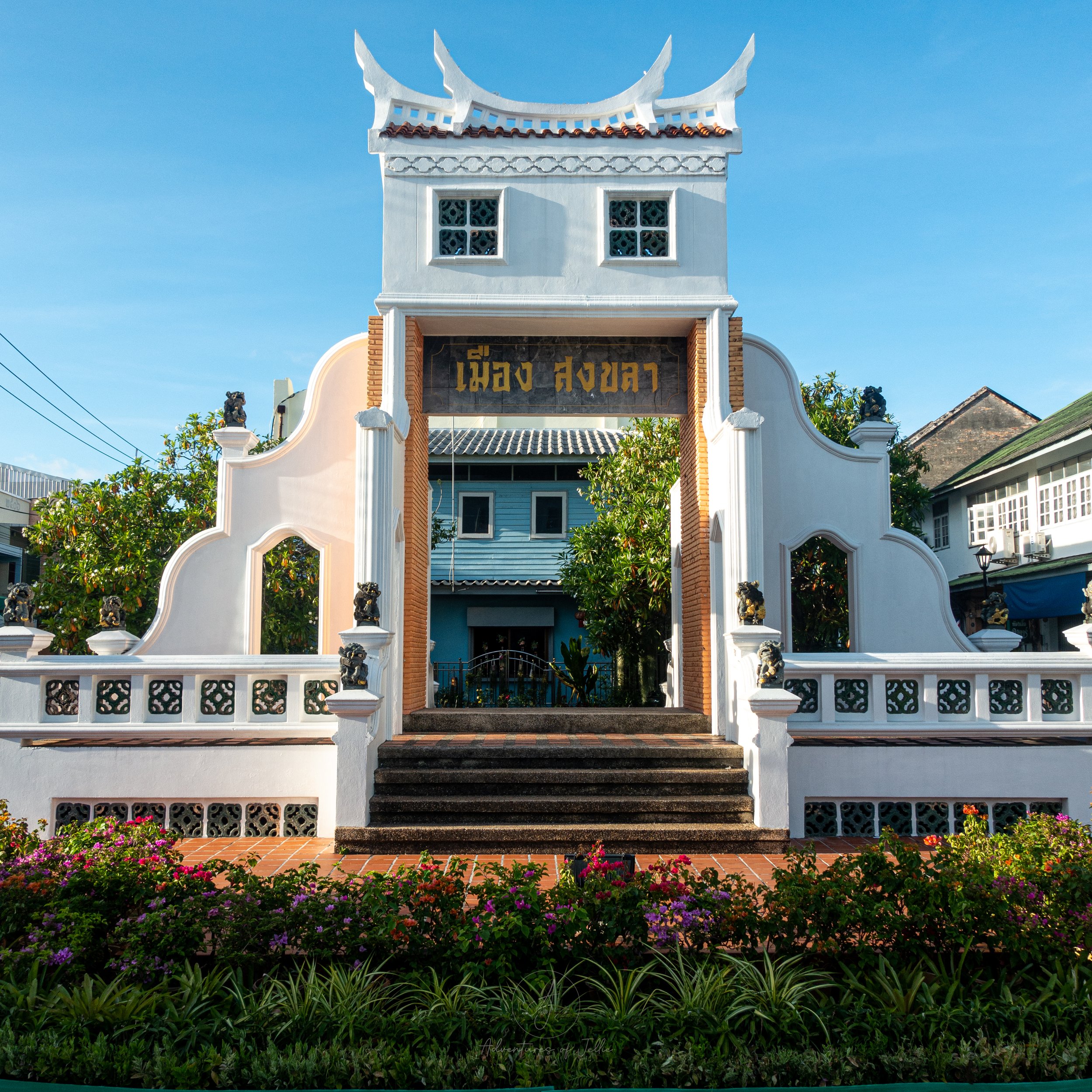

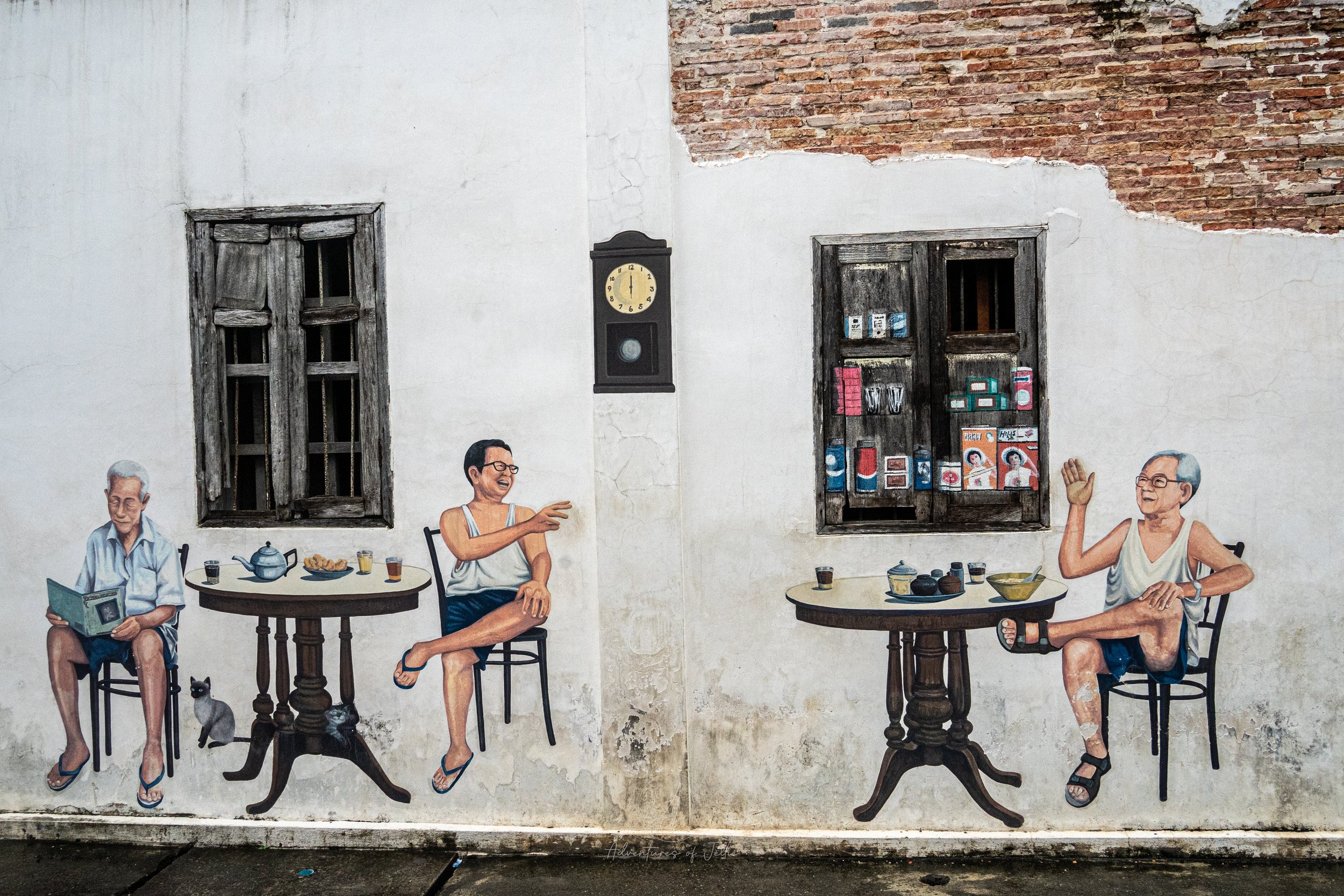

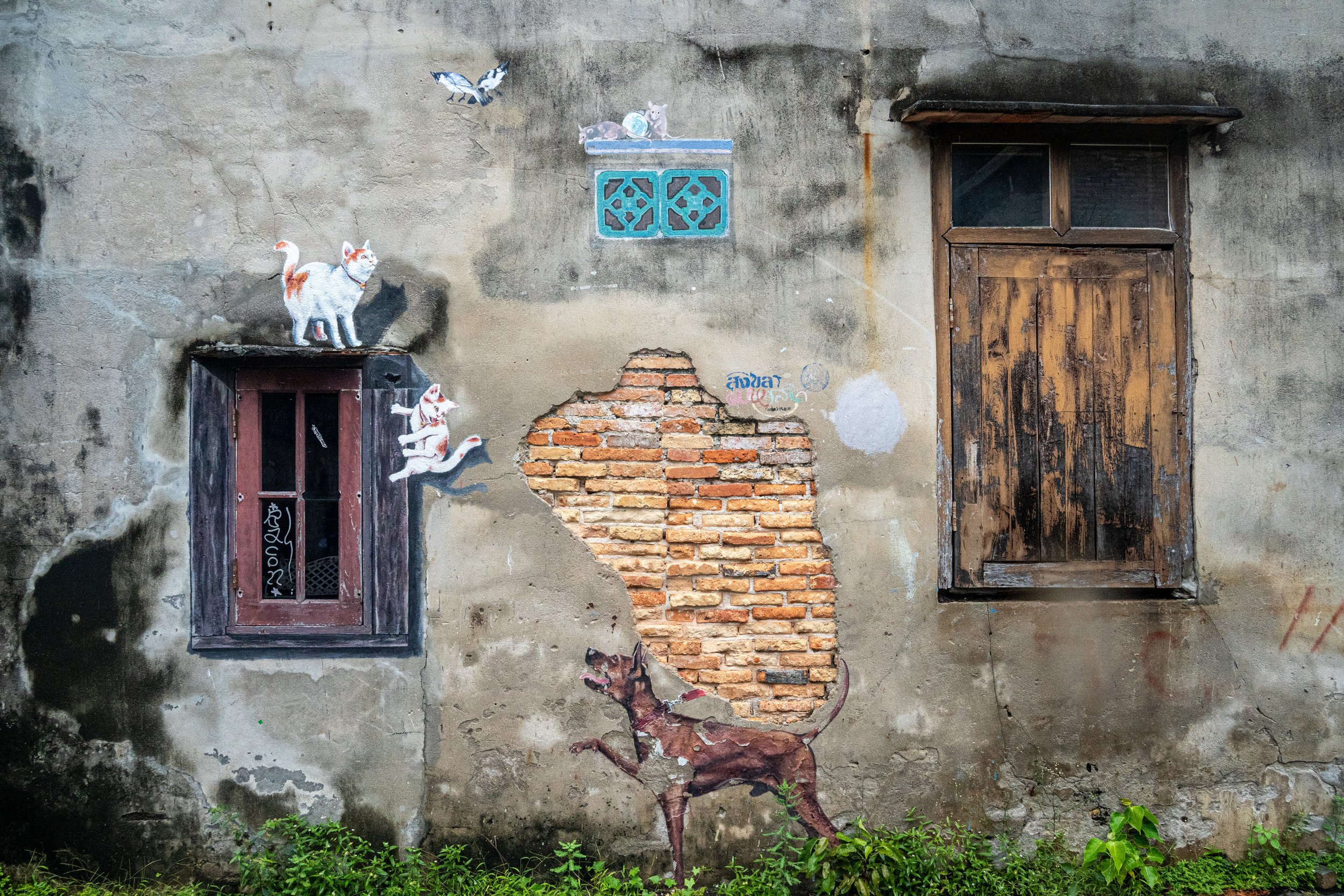


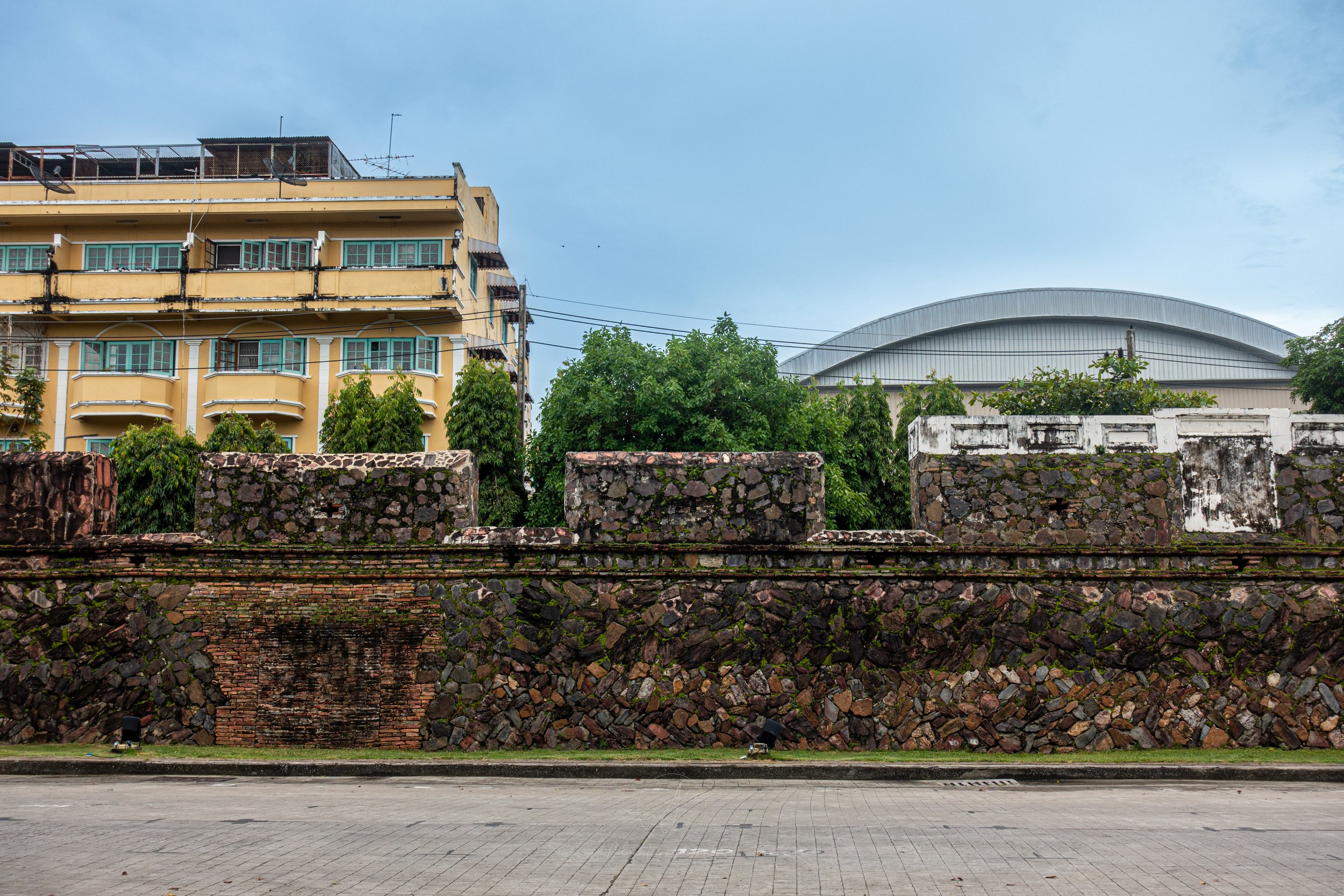




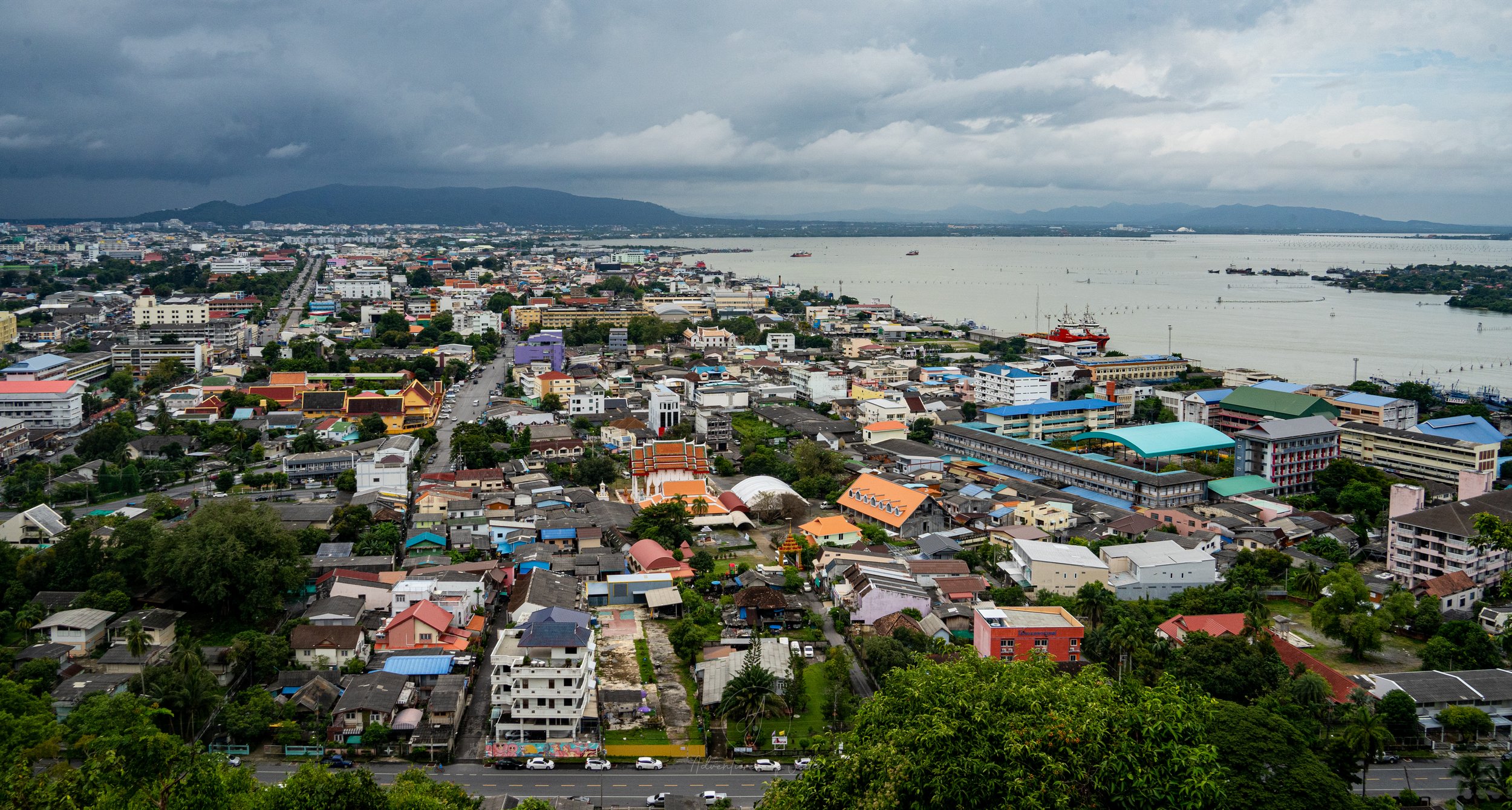




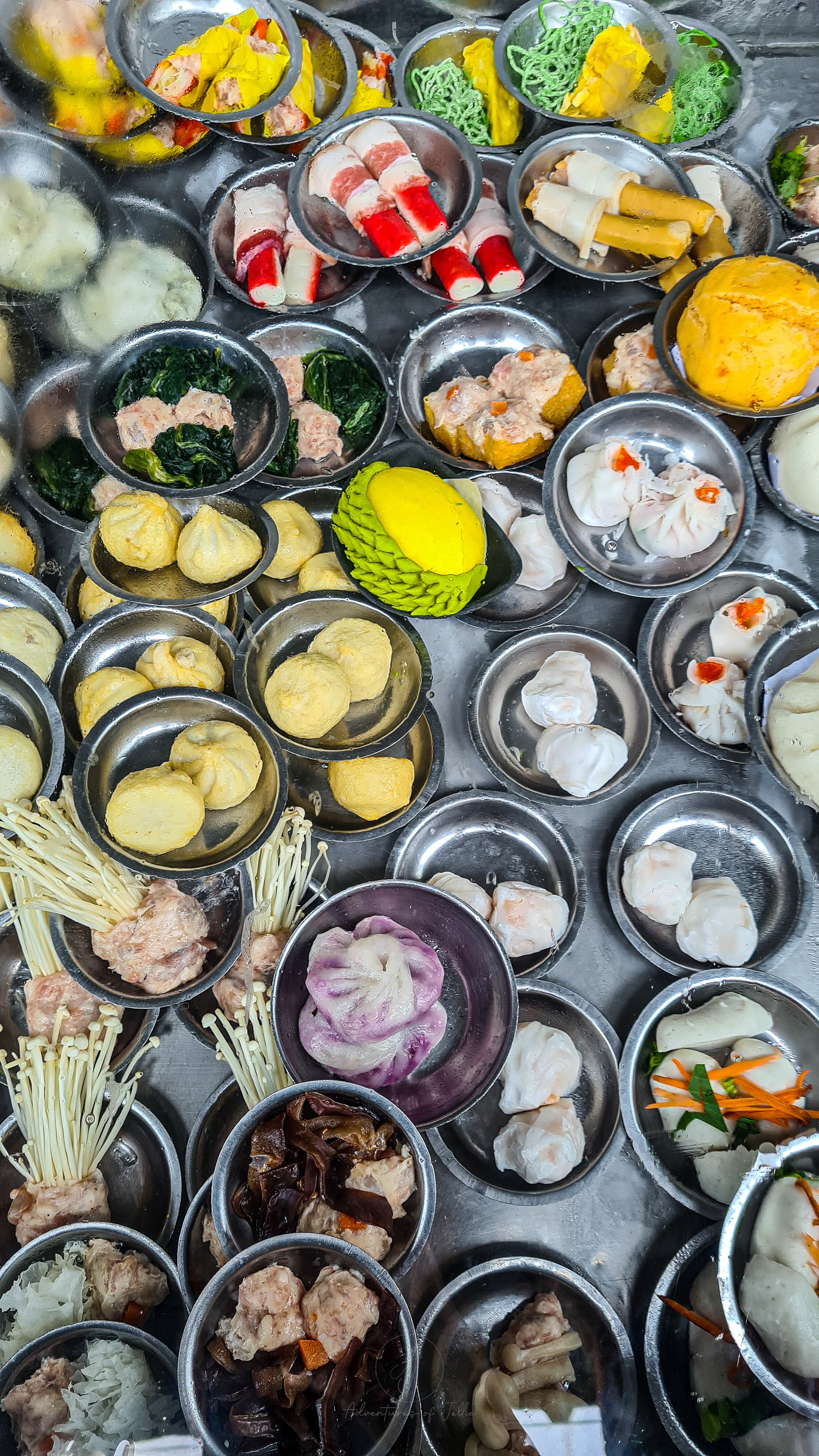


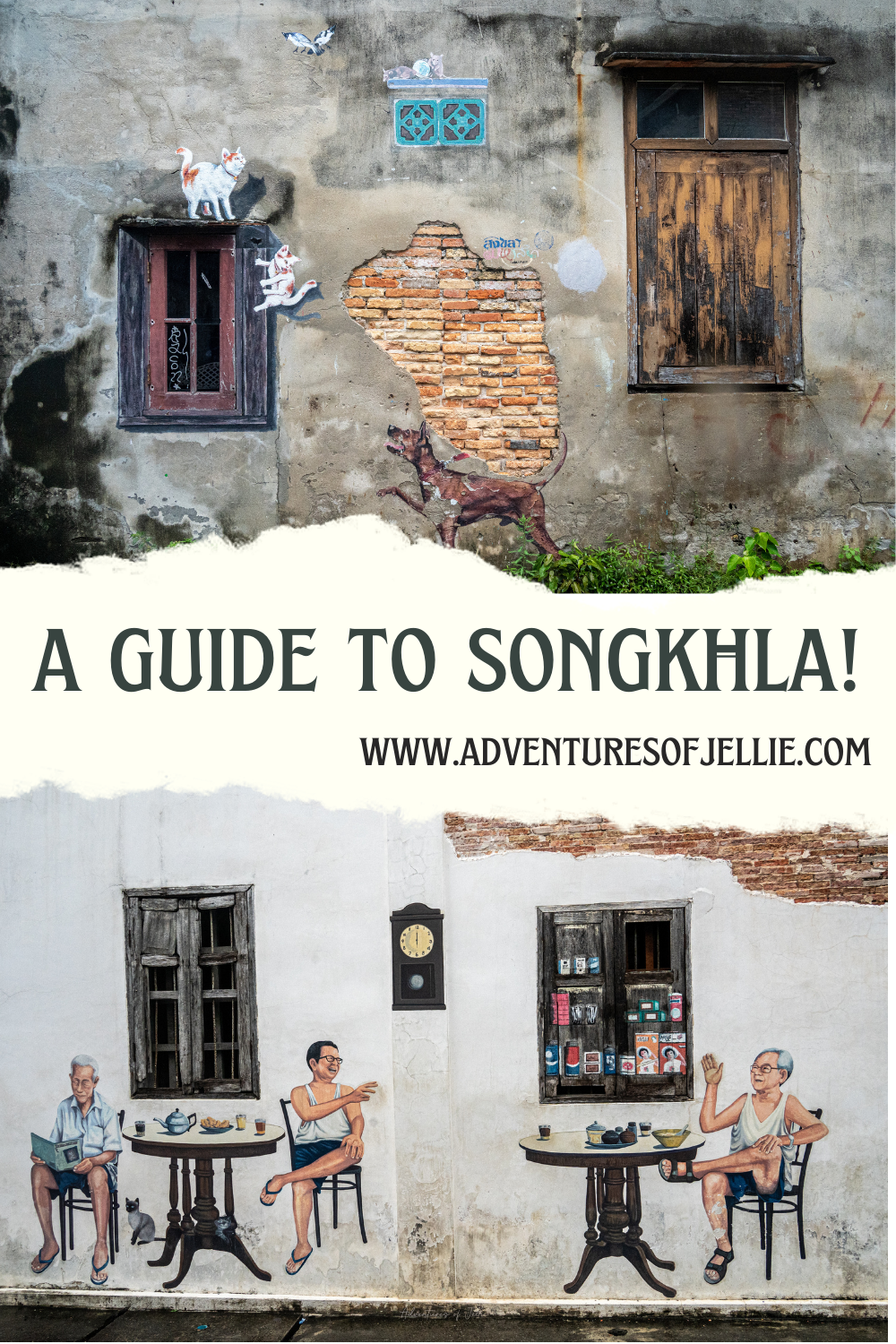
Songkhla’s historic Old Town has a great choice of bars, cafes and drinking holes. Read our guide on where to drink, how much it will cost you and where to have a sunset beer in the historic harbour town of Songkhla.